People have favourite plants, and viburnum is one that makes Harwood’s Garden Suppliess list. Best in temperate areas, viburnums are one of the most versatile shrub/tree and is certainly garden-worthy! It ranges from half a meter shrub to 9m trees.
Viburnum has attractive leaves and has fragrant flowers. Many varieties also boast of fruits that are spherical in shape and with colours ranging from red, yellow, black, to blue. The fruits appeal to birds and other wildlife.
Viburnum is a genus of over 150 evergreen, semi-evergreen, and deciduous (meaning they shed leaves yearly) plants. Many species have attractive and gorgeous leaf colours in autumn. Some species have flowers that look like hydrangeas, blooming through winter.
Where to buy Viburnums?
If you are looking to buy Viburnum plants, we suggest you buy your Viburnum plants here.
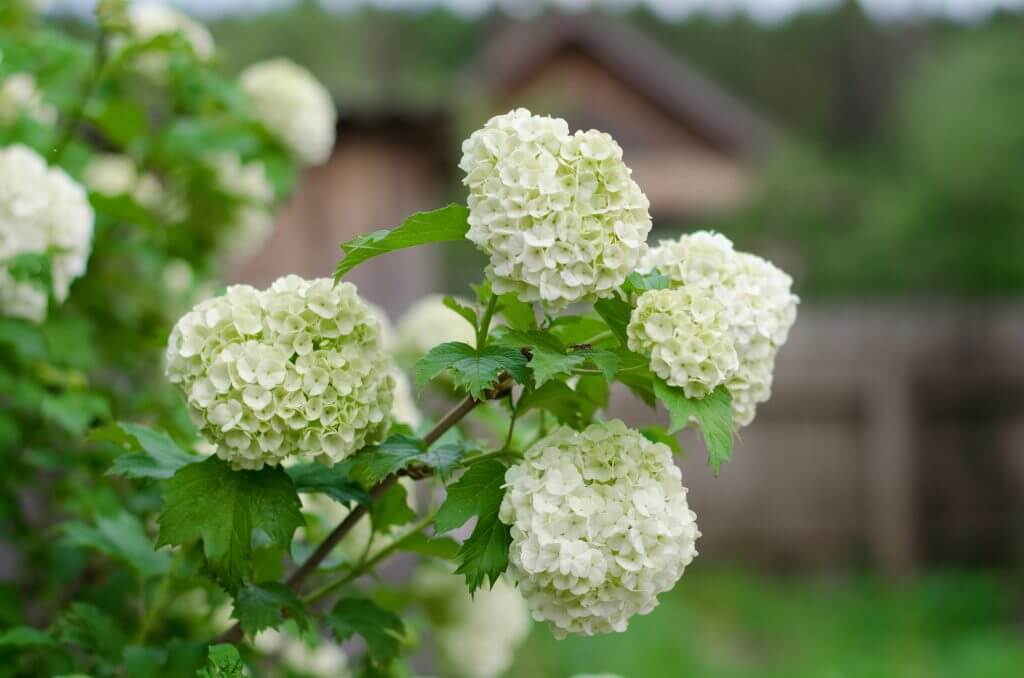
Viburnum grows in moderately fertile, well-drained soil in partial shade or full sun. But there are some viburnums that prefer dry soil. Let’s look at the common varieties of viburnum, so that you would know what to choose for your garden.
What makes the species of viburnums similar to each other is the way that the flowers are clustered together very much like an umbrella. The cluster of flowers is called corymb or inflorescence.
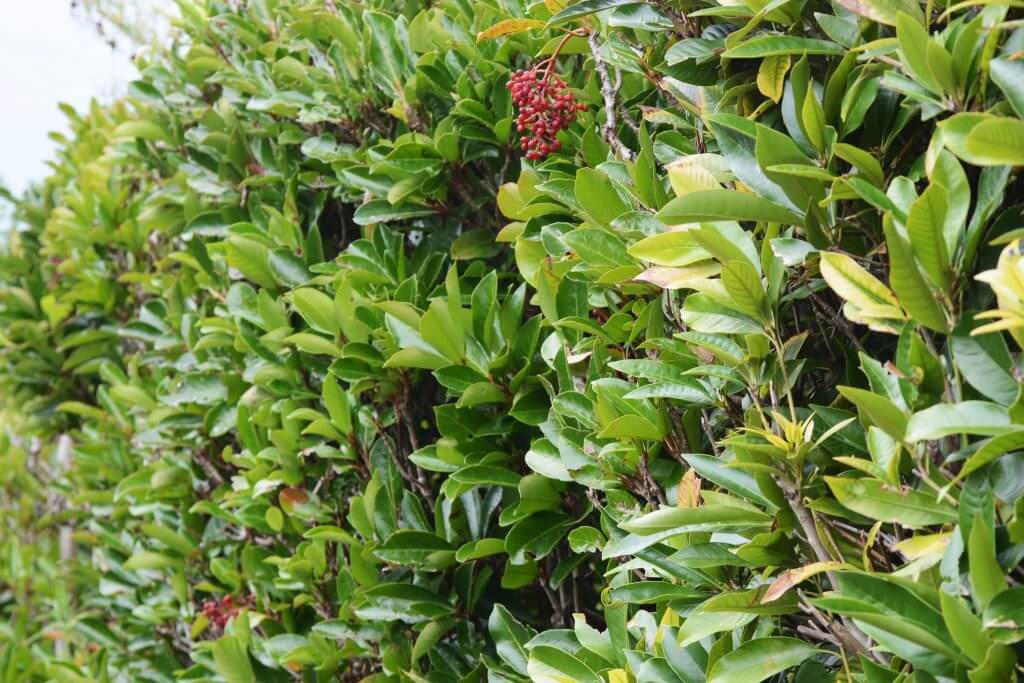

Common Varieties of Viburnum
Viburnum Tinus or Laurustinus
Viburnum tinus is a robust, bushy evergreen shrub known for its conspicuous clusters of flowers, leathery leaves, and colourful berries. It grows up to 240cm in height and 180cm in width.
Viburnum tinus produces pale pink buds in winter that grows until the middle of spring. Masses of small, aromatic, white flower clusters are elegantly positioned above the leaves. The flower clusters are about 5-10cm in size. Because they are rich in nectar, viburnums attract bees, butterflies, and other pollinators. The flowers yield eye-catching metallic blue berries.
Viburnum tinus has oblong, glossy dark green leaves, making it a perfect choice for hedges, borders, and low privacy screens. It is a great asset in the winter garden because not only is it easy to grow and manage, but also because this long-flowering shrub blooms when almost nothing else is in bloom.
- Location: Full sun or shade.
- Soil: Well-drained and moderately fertile and humus-rich soil. It can adapt to clay or sandy soils if well-drained.
- Watering: Give ocassional water during dry months for best fruit and flower production. Once the viburnum tinus is established in its planting ground, it is drought-resistant.
- Pruning: Prune to maintain its shape in early to the middle of summer. Do not remove dead flower heads as it will not produce berries.
- Feeding: Mulch yearly with compost or well-rotted manure.
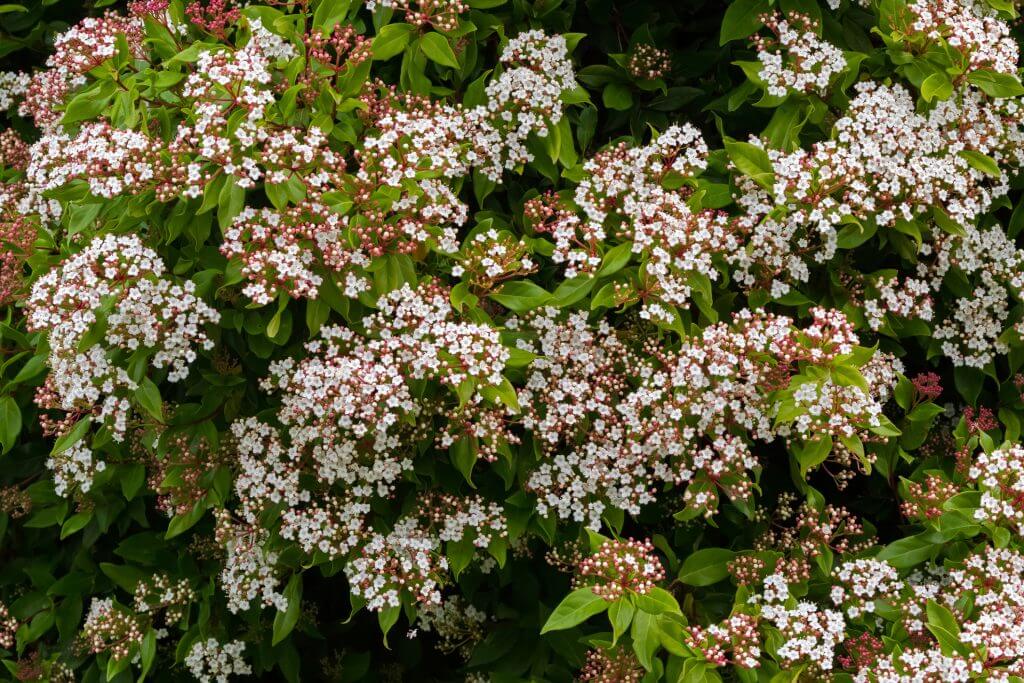

Viburnum Odoratissimum or Sweet Viburnum
Sweet viburnum is a small tree or shrub that is native to Asia, but is used as a garden ornamental in other places. Growing up to 9m high, it has glossy oval leaves that are 20cm long.
It produces pyramid-shaped white flower clusters that emit a sweet fragrance, followed by berries that start as red then matures to black. In spring, the tiny buds cover the whole canopy, showcasing the entire garden.
- Location: Full sun or partial shade
- Soil: Any well-drained, semi-fertile soil except salty soil
- Watering: Water generously and regularly for several weeks after planting
- Pruning: Prune consistently in summer to keep its shape
- Feeding: Mulch in autumn


Viburnum Carlesii or Koreanspice Viburnum
Koreanspice Viburnum is a popular choice for those who want petite shrubs. It is a compact, spherical, deciduous shrub with an abundance of cinnamon-scented large flower clusters, which are attractive to birds. The pink flower buds open into white flowers tinged with pink, turning into white as they mature.
Following the flowers, bright red berries are produced in dense upward clusters. They go beautifully with the leaves that are tinged when bronze when young and then turn to maroon in autumn.
- Location: Full sun or partial shade
- Soil: Well-drained, moist soil
- Watering: Average as they love moist soil
- Pruning: Prune after flowering
- Feeding: Fertilise with a slow-release formula in early spring
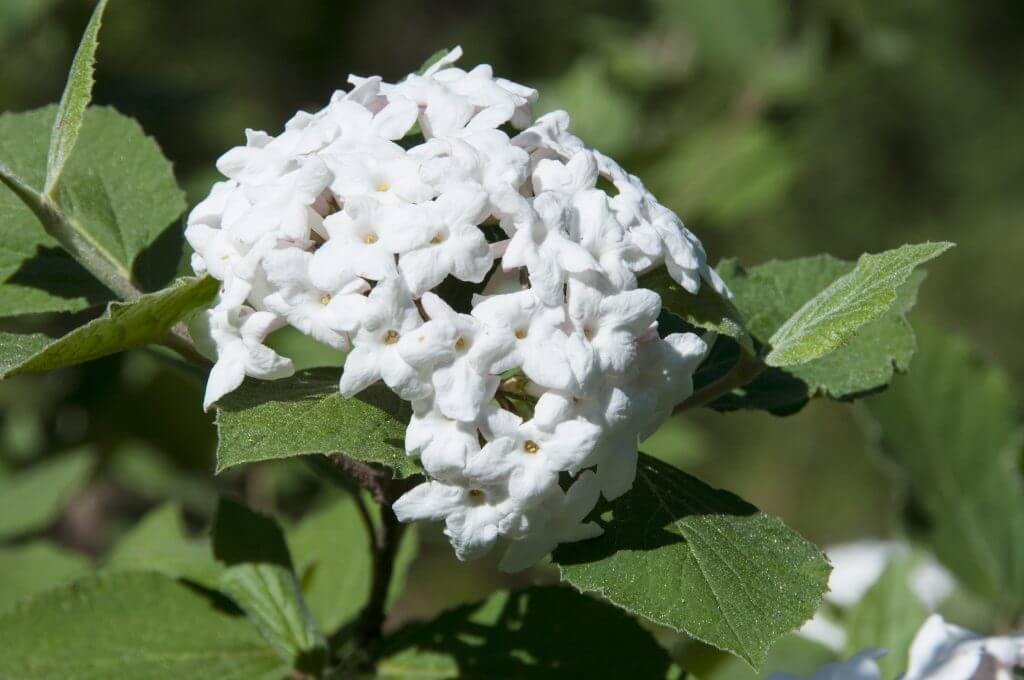

Viburnum Opulus or Snowball Viburnum
Another trendy bush, snowball viburnum is easy to manage and grows into a dense mound. The 7.6cm flower clusters are apple-green when they start and then change to white. They eventually turn to a rosy colour just like hydrangeas. The flowers are perfect for displays but don’t morph into berries, unlike the other viburnums. The leaves are like that of maple trees, which turn into beautiful reddish-orange in autumn.
- Location: Full sun or partial shade
- Soil: Loamy soil, but can adapt in any well-drained soil
- Watering: Water enough to keep the soil moist. Water more in extreme heat.
- Pruning: Prune right after flowering to keep its shape.
- Feeding: Fertilise with a slow-release formula in early spring, or use compost any time.
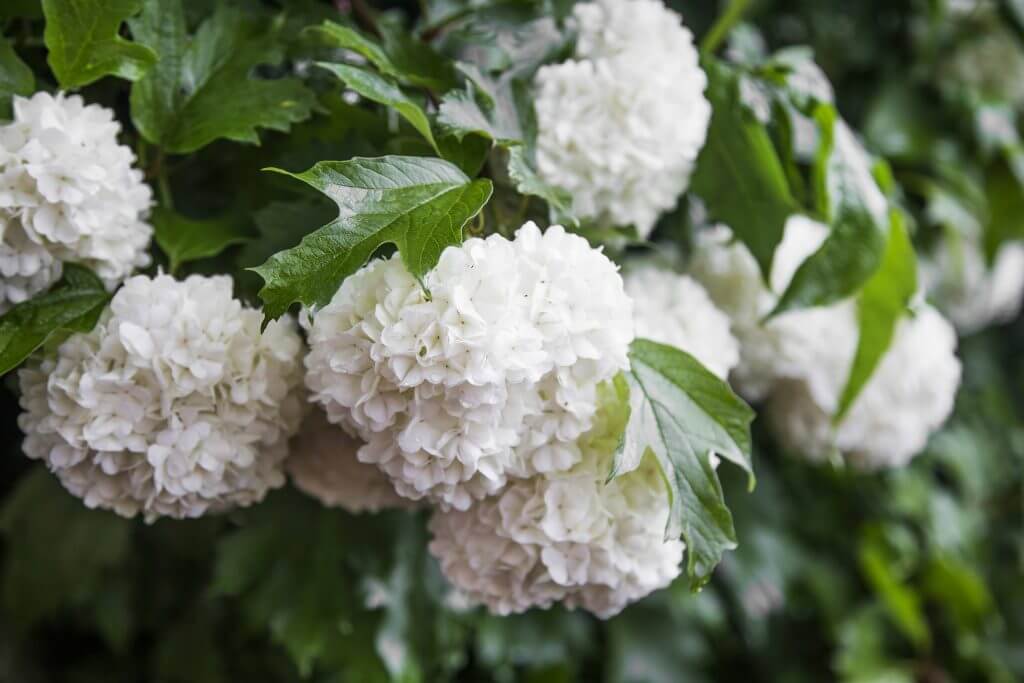

Viburnum x Burkwoodii or Burkwood Viburnum
Burkwood viburnum, just like its sisters, is a shrub that’s easy to grow, which can reach 3m, and has dashing fragrant flowers that attract butterflies to your yard. It has a dense branching pattern, making it ideal for a bird’s nest. The flower buds start as pink then open in white, blooming in the middle up to late spring.
A semi-evergreen, it is a hybrid that is not as showy as other viburnums in terms of its fruit display in summer. The fruits are red, blue, and black berries. These viburnums have 10cm glossy green leaves with hairy undersides. The leaves turn a gorgeous burgundy or maroon in autumn.
- Location: Full sun or partial shade
- Soil: Adaptable to a wide range of soil types, but should be well-drained
- Watering: Drought-resistant
- Pruning: Prune right after flowering to keep its shape. Remove diseased, unhealthy or dead wood any time.
- Feeding: Fertilise with a slow-release formula in early spring


What to Expect
Viburnums are very versatile and can adapt to any conditions, making them perfect for your garden. They rarely contract diseases, which makes them low-maintenance. The correct location of plants, sufficient air circulation, and good watering habits can prevent soil and airborne issues.


Roots
Armillaria root rot (also known as shoestring root rot or mushroom root rot) is a fungus that affects plant roots, which can lead to death. The leaves and stems will appear yellow and leaves may fall. The roots of viburnum will eventually get sicker. The whole process up to death can take many years. It is hard to tell though if it’s armillaria root rot because the symptoms are like that of other stresses like poor care and lack of water.
Leaves
The most common diseases of viburnums are fungal diseases of the leaves. Here are the three fungal diseases that affect viburnums:
- Downy mildew – the leaves develop spotted areas, which eventually die in spring. Keep the leaves as dry as possible to prevent downy mildew.
- Fungal leaf spots – the leaves develop small spots that develop into irregular reddish to grayish brown spots. These typically happen in wet, warm summer months. Keep the leaves as dry as possible to prevent fungal leaf spots.
- Powdery mildew – white dusty growth appears on the surfaces of leaves. Use fungicide or horticultural oil.
Branches and Bark
Characterised by wilted or dead leaves, botryosphaeria canker affects viburnum. The fungus bears fruiting bodies that show on the branches and bark as dark brown or black bumps. There is no treatment yet, but you can prune off the affected parts with clean pruners.
